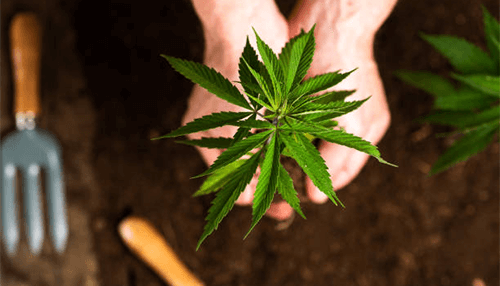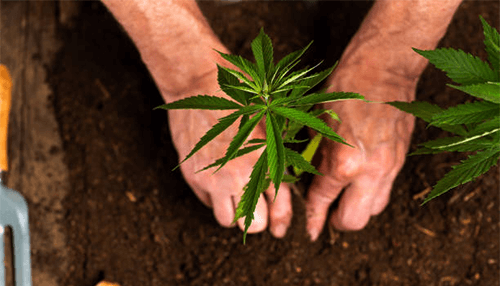Outdoor marijuana plants pull all the nutrients they need from the soil. They require more nutrients than most common food crops, though, and even the richest soils will be depleted quickly in a marijuana garden. That’s where compost and fertilizers come in. They provide a constant supply of essential macronutrients and micronutrients to growing cannabis plants, even if the nutrients found naturally in the soil have already been depleted.
The Difference Between Compost and Fertilizer
There are tons of different types of compost and fertilizers for outdoor marijuana plants. Before investigating brands, the first thing growers need to do is decide whether they want to use compost or fertilizer. Here are some key differences between the two types of products that can make the decision a little easier:
- Compost feeds the soil, while fertilizers feed plants directly.
Compost is usually organic, while fertilizers often contain chemicals.
Compost helps to maintain a healthy soil food web, while too much fertilizer can throw off soil chemistry and discourage microbes.
The guidelines for compost application are usually quite broad, while fertilizer must be applied in very specific quantities to avoid nutrient burns.
The good news is, compost and organic fertilizers can be used together to offer maximum benefits to plants. Adding a layer of compost to an outdoor garden at the beginning of the season will feed the soil food web, improve its ability to hold moisture, and reduce the amount of fertilizer growers will need to apply throughout the season.
Best Practices for Compost Use
One of the best ways to get compost for improving the soil is to make it at home. Making compost is easy, free, and gives growers the chance to recycle their organic waste.
All it takes to make compost at home is a nitrogen source such as kitchen food scraps and a carbon source like dried leaves. Mix them together at a carbon-to-nitrogen ratio of roughly 25-30:1, give the compost pile plenty of water to speed up decomposition, turn the pile once in a while, and wait for those composting microorganisms to do their work. Once the compost is matured, follow these best practices for compost use in outdoor gardens:
- Apply compost at least three times a year: once in the fall, once a few weeks before seed germination, and once when the plants are a couple of months old.
Use approximately 4.5 pounds of compost per square meter of soil.
Make sure the compost is at least 2-3 months old.
Never place unfinished compost up against a plant’s stem.
Best Practices for Fertilizer Use
The best fertilizers to use in outdoor grows are made from organic materials. They come in either liquid or powdered form, and may contain:
- Blood or fish meal for nitrogen
Bat guano or bone meal for phosphorus
Kelp meal or wood ash for potassium
Lime for calcium and magnesium
Epsom salts for sulfur and magnesium
There are plenty of commercial soil blends designed specifically for use on marijuana crops. Keep in mind that liquid fertilizers are fast-acting, so they’re more likely to cause nutrient burns. They’re also a better option for correcting soil deficiencies quickly before they cause serious damage to the crop.
Combine Compost and Organic Fertilizer for Best Results
While it would make little sense to combine chemical fertilizers with organic compost since the chemicals would disrupt the soil food web, organic fertilizers make a perfect complement to homemade or store-bought compost. Try using a combination of both to support healthy, high-yielding plants.



